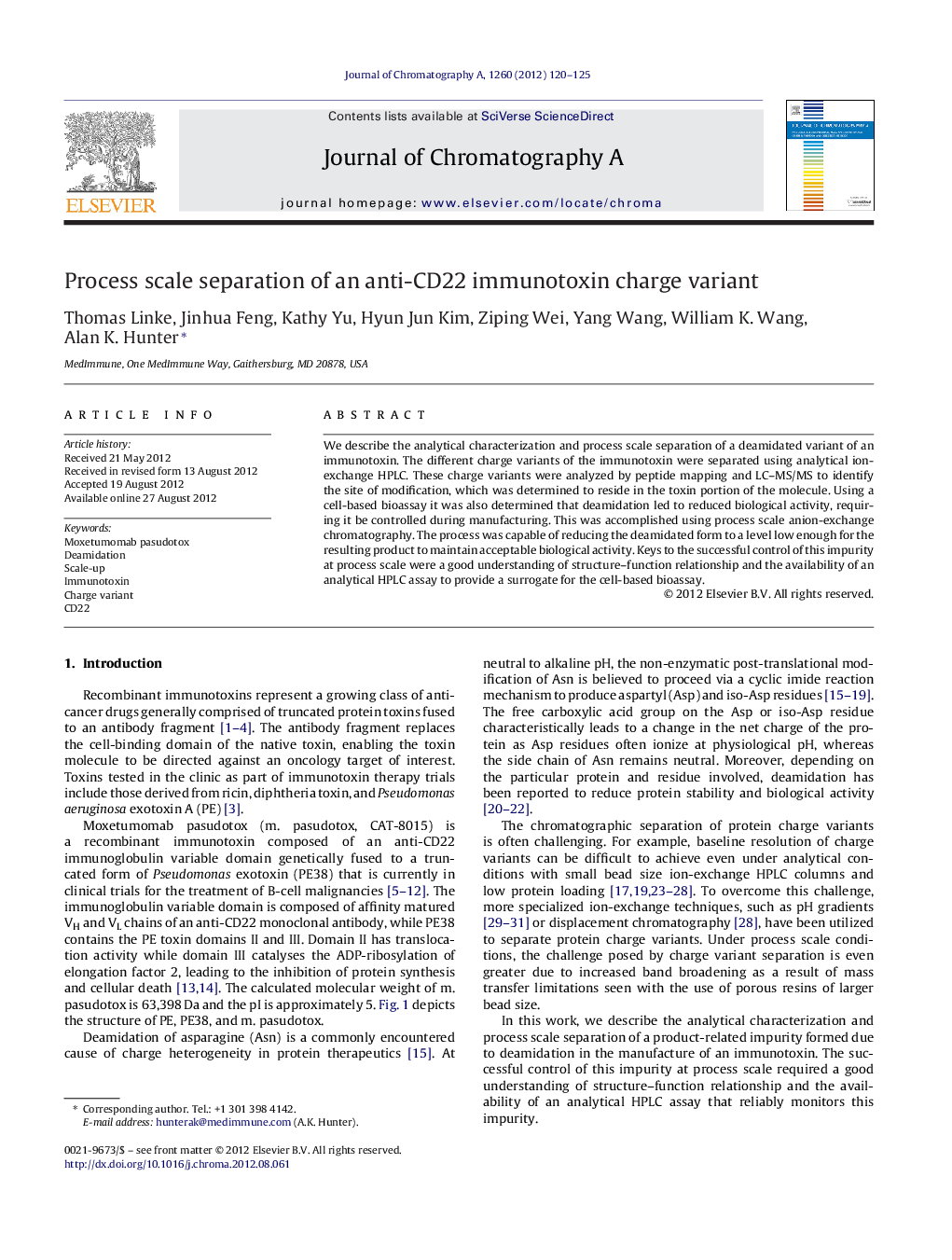| Article ID | Journal | Published Year | Pages | File Type |
|---|---|---|---|---|
| 1202162 | Journal of Chromatography A | 2012 | 6 Pages |
We describe the analytical characterization and process scale separation of a deamidated variant of an immunotoxin. The different charge variants of the immunotoxin were separated using analytical ion-exchange HPLC. These charge variants were analyzed by peptide mapping and LC–MS/MS to identify the site of modification, which was determined to reside in the toxin portion of the molecule. Using a cell-based bioassay it was also determined that deamidation led to reduced biological activity, requiring it be controlled during manufacturing. This was accomplished using process scale anion-exchange chromatography. The process was capable of reducing the deamidated form to a level low enough for the resulting product to maintain acceptable biological activity. Keys to the successful control of this impurity at process scale were a good understanding of structure–function relationship and the availability of an analytical HPLC assay to provide a surrogate for the cell-based bioassay.
► We report the analysis and characterization of an anti-CD22 immunotoxin charge variant. ► Increased levels of the charge variant were correlated with lower biological activity. ► The cause of the charge variant was identified as a deamidated asparagine in the toxin portion of the molecule. ► Process scale chromatography was successfully used to separate the deamidated immunotoxin.
